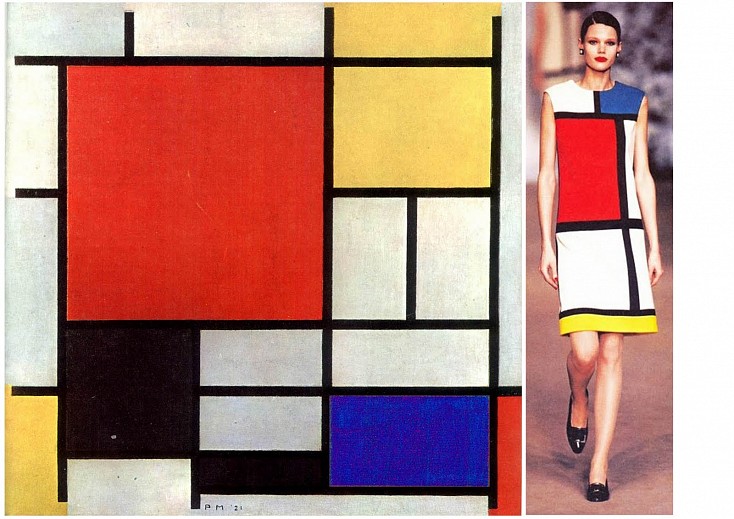
A Connection to the Past
February 1, 2017
Mondrian meets Murrill
There are few artists who can boast of having the same impact on the art world as Piet Mondrian. His vibrant abstract canvases are still highly sought after by collectors and are instantly recognizable to even the most casual of art appreciators. Mondrian’s work became part of the cultural zeitgeist of the 1960’s when Yves Saint Laurent created his now famous Mondrian collection; a series of dresses that reproduced the artist’s work on the fabric, creating wearable art.
Laurent said of the artist that
“Mondrian is purity and one can go no further in purity in painting. This is a purity that joins with that of the Bauhaus. The masterpiece of the twentieth century is a Mondrian.”
It is fitting that an artist so known for his purity and ability to distill his canvas finds himself inspiring the similarly distilled work of sculptor Gwynn Murrill.
Murrill, like Mondrian, works with shapes and lines, yet she uses hers to elicit forms that we know as an animal. None of her sculptures can be considered a particular animal, rather they represent the idea of that species. When we see Murrill’s deer, they inhabit all that we associate with the animal, coy yet ready to go at a moment’s notice, strong but fragile. Murrill makes the historical connection to Mondrian clear in her latest work, 4 Birds.

A simple, striking free standing sculpture, it uses Murrill’s pared down animal forms in conjunction with Mondrian’s harder abstract lines. The contrast of the softer forms of the birds with the angular stand on which they are perched allows the viewer to see both aspects as uniquely individual without being disparate. Melding the geometric visual language of the De Stijl movement with her own contemporary abstraction, Murrill creates a piece that appeals to both the mind and the eye.
Back to Blog
